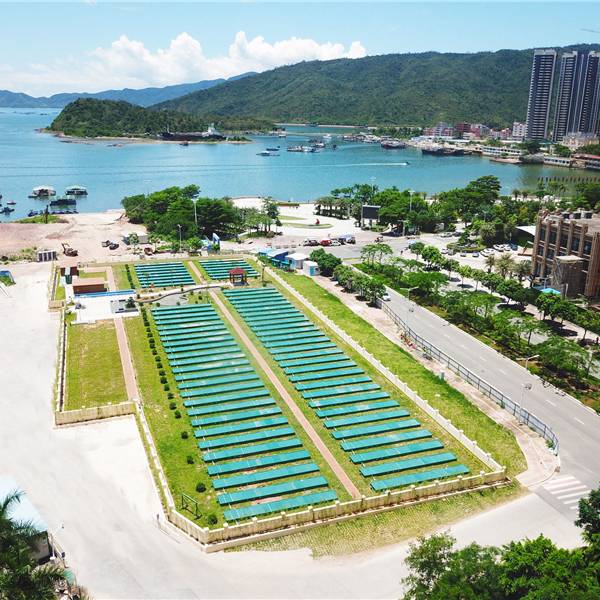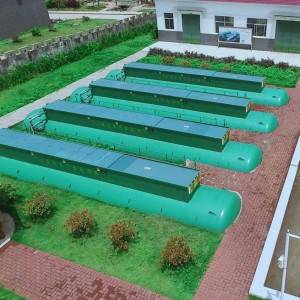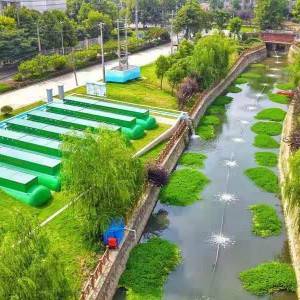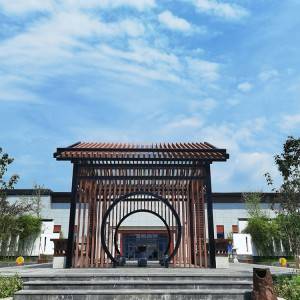Huizhou City, China
Location: Huizhou City, China
Treatment Capacity: 20,000 m3/d
WWTP Type: Integrated FMBR Equipment WWTPs
Process: Raw Wastewater→ Pretreatment→ FMBR→ Effluent
Project Brief:
The Coastal Park FMBR STP is located at Huizhou City. The designed domestic wastewater treatment scale is 20,000m3/day. The main structure of the WWTP is intake tank, screen tank, equalization tank, FMBR equipment, effluent tank and measuring tank. The wastewater is mainly collected from the coastal park, aquatic product wharf, fisher wharf, dragon bay, Qianjin wharf and residential areas along the coast. The WWTP is built on the seaside, close to the residential area, has a small footprint, few residual organic sludge discharging and no odor in daily operation, which does not affect the surrounding environment.
FMBR technology is a sewage treatment technology independently developed by JDL.The FMBR is a biological wastewater treatment process that removes carbon,nitrogen and phosphorus simultaneously in a single reactor.Emissions effectively solve the “neighboring effect”. FMBR successfully activated the decentralized application mode, and is widely used in municipal sewage treatment, rural decentralized sewage treatment, watershed remediation, etc.
FMBR is the abbreviation for facultative membrane bioreactor. FMBR uses the characteristic microorganism to create a facultative environment and form a food chain, creatively achieving low organic sludge discharge and simultaneous degradation of pollutants. Due to the efficient separation effect of the membrane, the separation effect is far better than that of the traditional sedimentation tank, the treated effluent is extremely clear, and the suspended matter and turbidity are very low.
The traditional WWTPs are usually in big size and far away from the residential area, so large sewer system with high investment is also required. There will be also a lot of inflow and infiltration in the sewer system, it will not only contaminate the underground water, but will also reduce the treatment efficiency of the WWTPs. According to some studies, the sewer investment will take around 80% of overall wastewater treatment investment.









